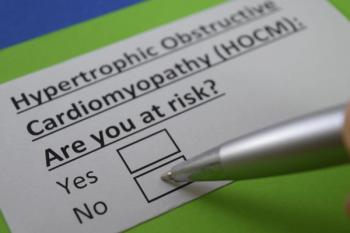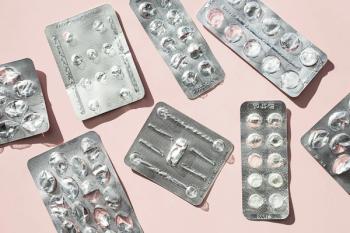
Just the facts: A look at pharmacy circa 1929
In 1929 Drug Topics tried something new and entirely novel when it published the 1929 Fact Book: A guide to drug trade marketing. The 500-page volume had no advertisements but cost $15a relatively large sum at the time. Most important, the volume provides an unprecedented level of insight into the pharmacy industry at an important moment in its development.
The Roaring Twenties were a time of dramatic growth and tremendous prosperity for pharmacies. Chain pharmacies were rapidly expanding while at the same time community pharmacies were well placed as central tenants in many downtowns. Not only did druggists sell medicines and toiletries, but the soda fountain at many pharmacies served as the town's social hub. Moreover, the state of the pharmaceutical industry itself was on the cusp of major changes with Sir Alexander Fleming's discovery of penicillin in 1928. Thanks to new and tougher drug laws, the days of patent medicines were beginning to recede, to be replaced by scientifically tested, mass-produced pharmaceuticals.
Of course, just a few months after the publication of the Fact Book, the stock market crashed, plunging the nation into the Great Depression. However, rather than halting the trends indicated in the Fact Book, the Great Depression may have served to accelerate the changes already taking place.
To appreciate the value of the Fact Book, it's truly worth reading the original text. While we can't reprint the entire 500-page volume, below are selected excerpts that provide a unique glimpse into the pharmacy industry 78 years ago. The text is reprinted exactly as it was published in 1929, errors and all, to give the full flavor of the original magazine.
Why a fact book?
For many years, the staff of the Topics Publishing Co., Inc., has been in close and intimate contact with the retailers, wholesalers, and manufacturers of the drug field. For years the problems of the drug industry have been our problems
. Manufacturers, advertising agents, newspapers, publishers, and others interested in marketing information have so frequently obtained information here, which was unobtainable elsewhere, that they have grown to depend on us. Each day brings its numbers of callers seeking help in one form or another. Facts, facts, they all want facts!
The modern drugstore
A survey just completed by the Topics Publishing Co. accurately places the number of drug stores in the United States at 61,865. [Of these] 57,812 are independently operated by their druggist owners. Some 4,053 are chain stores owned by 523 chain combinations.
The year 1927 alone saw 3,884 new drug stores. In the same year 2,661 drug stores went out of business. A net gain of 1,223 drug stores for the year. In the same time, there were 5,497 changes of ownership or addresses. A total "turnover" of 12,042 or almost 20% within one year.
Drugstore volume of business
The Chamber of Commerce of the United States studied a total of 4,397 retail drug stores or approximately 7% of the drug stores of the country
This governmental survey indicated that the total of 4,397 drug stores did a total volume of $155,892,200-an average of $35,454 per drug store per year. Of the 4,397 stores, 3,876 were independently owned and did $109,348,300 annually. Five hundred and twenty-one stores were chain owned and did $46,543,900 a year
That the average chain store does a larger volume than the average independent store is due to the better location of chain stores as a class and that a chain, in acquiring an independent store, will rarely purchase a store previously doing less than $75,000 annually
Drugstore buying habits
It is estimated that the average drug store regularly stocks in the neighborhood of six thousand items of merchandise including various brands of similar products and different sizes of single products.
Each druggist has a choice of some three or four hundred thousand items offered him as suitable for drug store sale. Competition between wholesalers and manufacturers is severe. The average city druggist will be 'called on' by from eight to ten manufacturers' and wholesalers' salesmen a day. Even small town druggists will interview from fifty to one hundred salesmen each month.
It is commonly known that druggists receive more direct mail solicitations than any other class of dealers. Recent surveys indicate druggists receive from two hundred to five hundred pieces of direct mail sales literature every month.
Soda fountain
A most conservative estimate credits 75% of all drug stores with operating soda fountains-46,398 of a total of 61,865 drug stores. The proportion is growing daily with 9 out of 10 new drug stores including soda fountains with original equipment and with fountain installations also going in to old drug stores every day
.
There is also associated with almost every drug store soda fountain an additional selection of food and confections for purchase in the store but for consumption in the home or elsewhere. Most prominent in this classification are of course packaged ice cream (brick or bulk) and candies. In addition, many drug stores today are successfully selling comprehensive lines of packaged foods including coffee, cocoa, tea, jams, jellies, crackers, cake, nuts and other specialties.
One prominent chain drug store operator has changed the name of his "Soda Fountain Department." He now calls them "Food Departments," which very accurately classifies the evolution of the drug store soda fountain in its present day development and tendencies for the future.
Newsletter
Pharmacy practice is always changing. Stay ahead of the curve with the Drug Topics newsletter and get the latest drug information, industry trends, and patient care tips.











































































































































































































